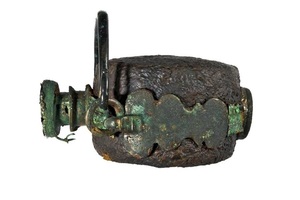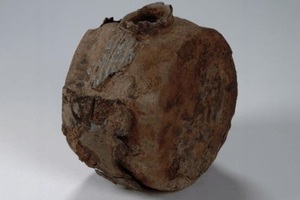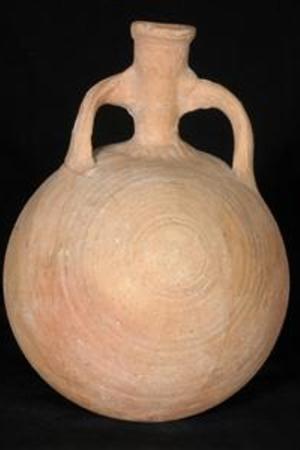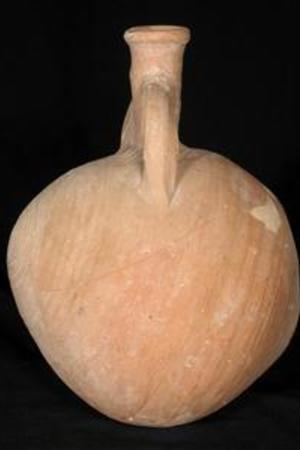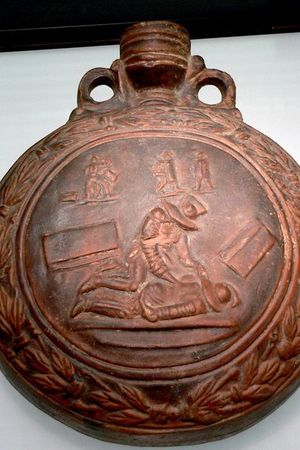Flask
The Latin name for a flask that has come down to us is ampulla. In antiquity, ceramic flasks were widespread, but metal versions of these vessels have also been found. It is hypothesized that flasks could have been made from leather, though no archaeological evidence of this has been discovered. Ampullae were primarily an essential part of the Roman army’s field gear.
A metal flask was discovered in the commune of Annecy in the historical region of Savoy. The earliest structures found in this area date back to the first half of the 1st century AD. It is most likely that a farm was built here at that time, located near a road that was actively used until the mid-4th century.
The discovered flask was made from an alloy of iron and copper. It had a cylindrical body and was decorated on the sides with iron plates. The wide neck of the flask was tightly sealed with a lid, which was attached to the handle with a wire chain. Scholars noted that the flask was equipped with a lock.
Analysis showed that the flask did not contain alcoholic beverages. Inside the flask, remnants of organic matter were preserved, which were subjected to laboratory analysis. The analysis revealed that the flask contained a mixture of millet with a small amount of berries and dairy products. Additionally, a small amount of pine resin and a plant rich in oleanolic acid, which could not be identified, were detected.
Researchers do not rule out the possibility that the flask could have contained an elixir, brewed specifically for a ritual ceremony. This is suggested by the fact that the flask was placed in a pit tightly sealed—possibly as an offering to the gods.
Many ceramic flasks have been found, which are typically associated with Roman or Greek civilization. They could be simple in form or feature handles or decorative elements.
